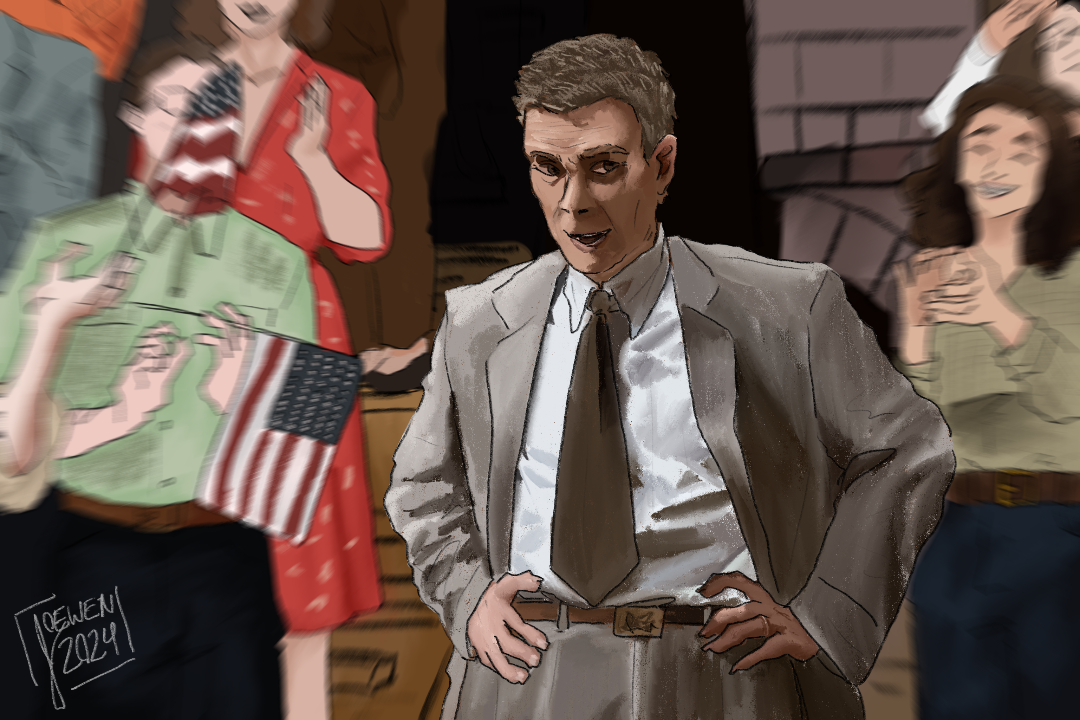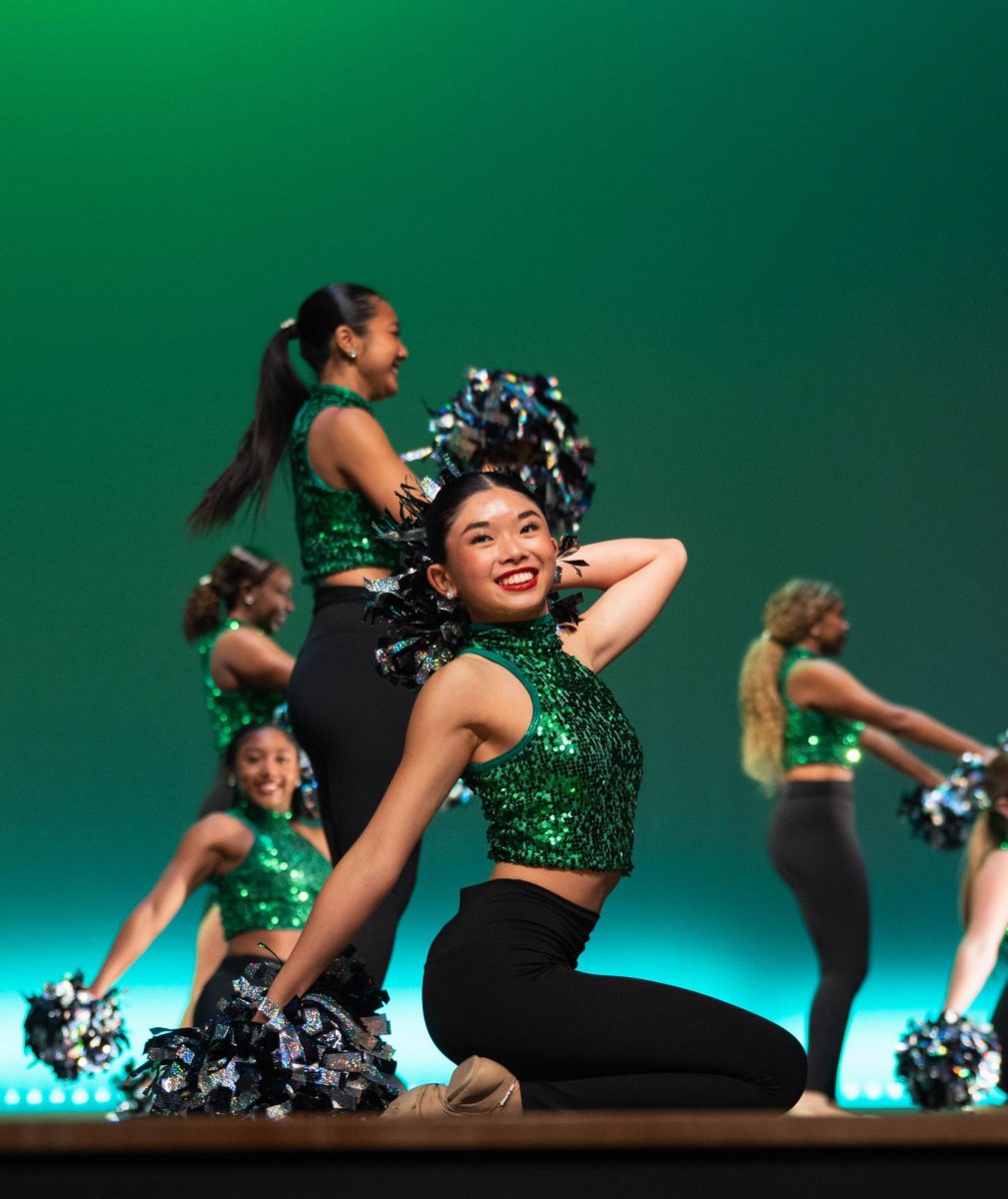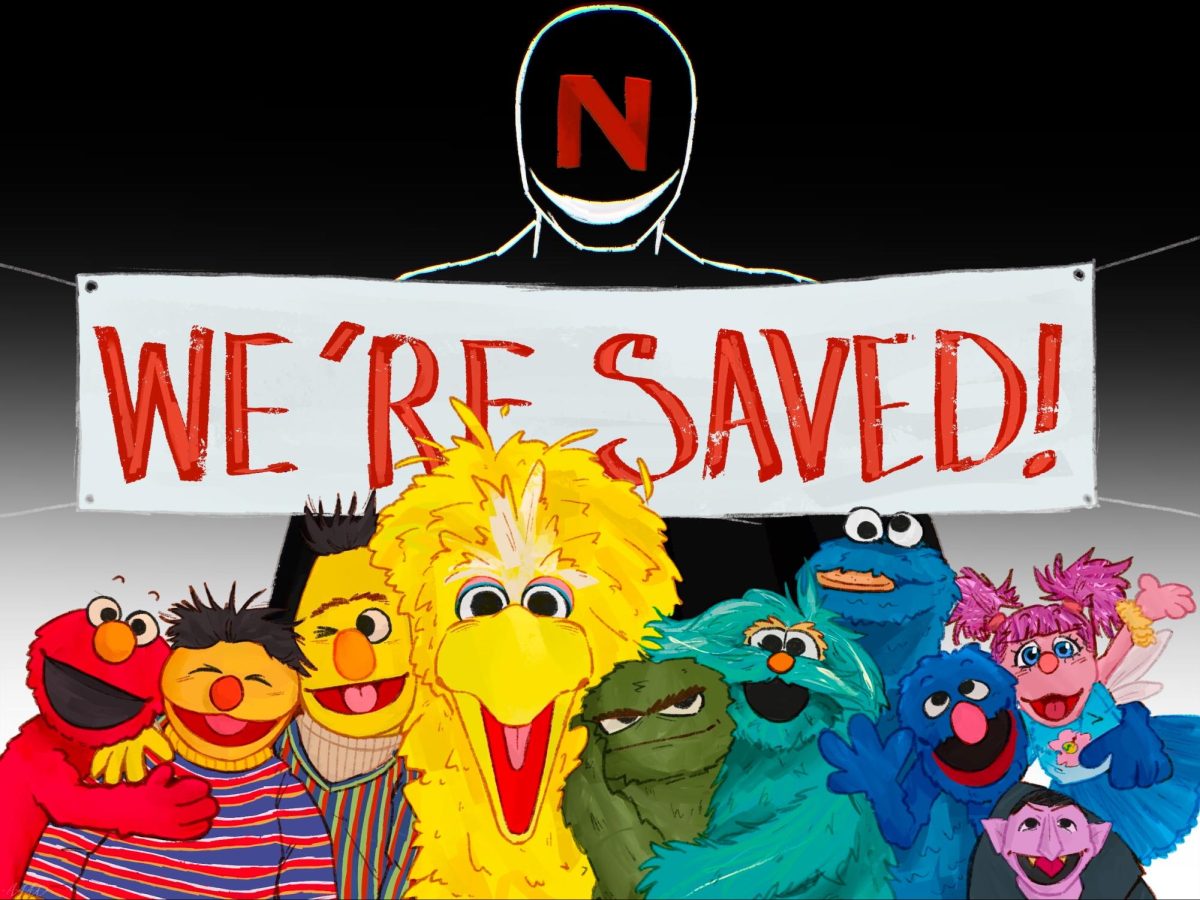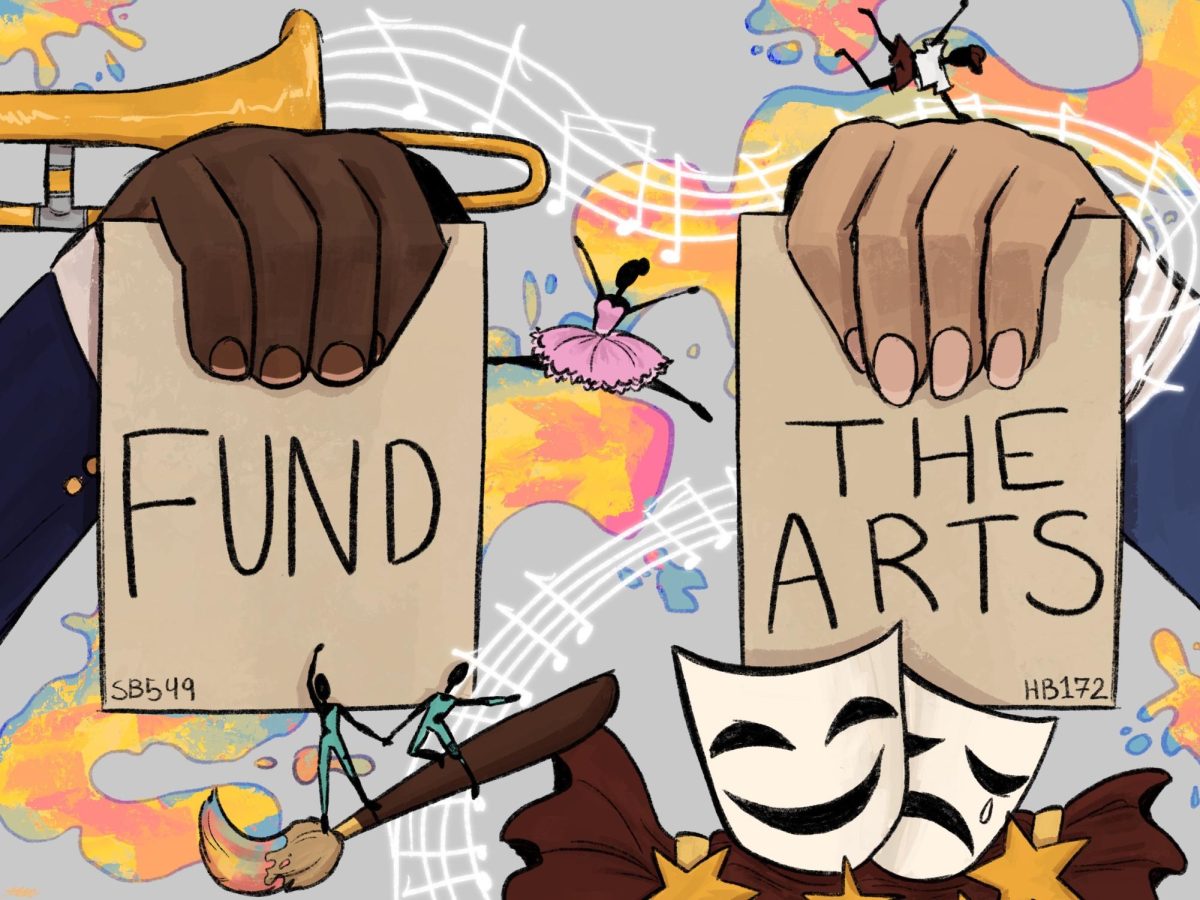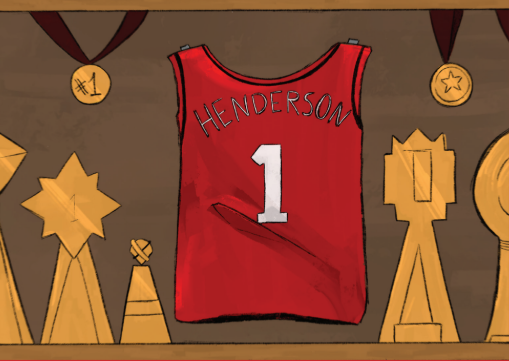We are one week away from the Oscars on March 10.
After 50 hours, two months of my time and 25 Oscar-nominated movies, I believe I’ve seen the best cinema 2023 had to offer. More importantly, I believe I can predict the best movies of 2023. So, take out a second mortgage, put all your money on my Vegas odds and enjoy.
Best Picture: “Oppenheimer”
This was a particularly tough decision for good reason. There was no clear winner, and my top five were some juggernauts: “American Fiction,” “The Holdovers,” “Anatomy of a Fall,” “Oppenheimer” and “Killers of the Flower Moon.”
Process of elimination nearly failed with these contenders, but I was saved by some glaring errors with my top four. “The Holdovers” was too lighthearted and frankly built upon too small a premise.
“Anatomy of a Fall” left too much ambiguity as to her guilt and didn’t offer a satisfying conclusion or even thoughtful message. The power of this courtroom drama was lost in trying to determine who killed Sandra’s husband; it might win in a forensics competition, but probably not for Best Picture.
This leaves “Oppenheimer ” and “Killers of the Flower Moon,” both of which tell a historical epic. “Oppenheimer ” gets the nod due to its slightly shorter (though still ludicrous) runtime and more cohesive plot. “Killers” couldn’t decide what direction it wanted to go or whether to portray Ernest Burkhart, the manipulative husband of Osage Indian Mollie Burkhart, as a knowing villain or a pushed-around chump. Ernest’s almost complete lack of punishment for the crimes he committed in the first two hours frustrated me. And director Martin Scorcese’s shift to courtroom thriller two and a half hours in only muddled the otherwise western-heavy plot.
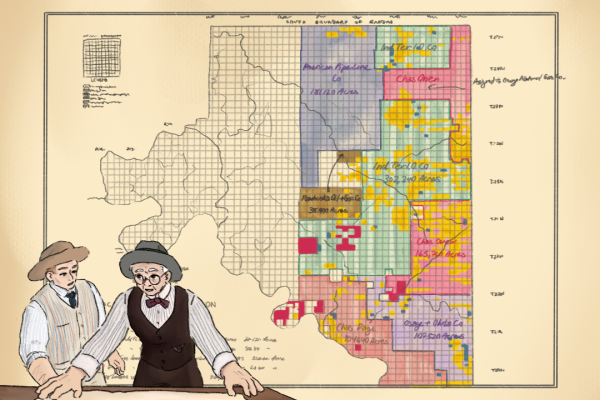
By contrast, “Oppenheimer” set off with a clear goal: a visually and musically stunning biopic about the man who brought about the atomic bomb. “Killers” motive was a little less clear. Was it supposed to merely portray the Osage Indian murders? Did it want to comment on white men (like Ernest Burkhart)’s actions? Was “Killers” originally just a shoot-em-up western? “Killers of the Flower Moon” is the more necessary movie; people need to know about the continued exploitation of Native Americans across the country. But “Killers” is not the better movie.
Best Director – Christopher Nolan
The problems discussed with Best Picture trickle down to Best Director, too. Martin Scorsese’s jarring tone shifts in “Killers of the Flower Moon” don’t scream Best Director. Neither does Justine Triet’s ambiguity in “Anatomy of a Fall,” however purposeful. And while I think Jonathan Glazer did an admirable job in “The Zone of Interest,” and so did Yorgos Lanthimos in “Poor Things,” neither of these films will be remembered for how they told their stories, only what the story they told was.
By contrast, Oppenheimer is almost remembered more for that “Nolan style” than the actual plot. A modern-day auteur (though he has never won an Oscar), Nolan is famed for non-linear storytelling, a variety of points of view, black-and-white and color swaps and muted tones. These stylistic choices make Oppenheimer more about how the audience is experiencing the film than just the plot. And that is the hallmark of a Best Director.
Leading Actress – Lily Gladstone
Lily Gladstone made “Killers of the Flower Moon” what it was. Lily, who is Blackfoot and Nez Perce, plays an Osage Indian with oil headrights who is manipulated and poisoned by her white husband for profit. Going toe to toe with Leonardo DiCaprio and Robert De Niro for three and a half hours is not easy for any actor, but Gladstone shines. She toes the line between an unknowing wife and a woman who tries to exert what limited power she has on those around her. In a film with otherwise two dimensional and reprehensible characters, Gladstone adds internal conflict and character development and saves “Killers.”
Leading Actor – Paul Giamatti
Though I mentioned that the “Holdovers” was simple in terms of story scope, I feel that this simplicity allows Paul Giamatti to shine. Playing an overburdened and underappreciated boarding school teacher, Giamatti’s natural wit and cynicism are ever present but somehow never smother the emotional bonding between him and a student who’s recently lost his dad to mental illness. The moments between Giamatti and his student are tender and heartfelt, yet always steer clear of saccharine tropes. Giamatti’s masterful role as an instructor who is still learning about himself turns this small-scale film into something more — something greater — an exploration of how to find joy in the smallest of everyday life (say, a snowglobe) a revelation of what success in academia really means.
Supporting Actress – Da’Vine Joy Randolph
It’s rare a movie wins for both a leading actor and supporting actress. It hasn’t happened in 40 years. But I believe “The Holdovers” has the opportunity to do just that. Da’Vine Joy Randolph, the school cafeteria manager, elevates “The Holdovers” to a movie about more than just a struggling teacher. Randolph’s loss of her son in Vietnam works beautifully as a secondary arc as her vulnerability reminds the audience of the diversity of trauma and loss. Her unlikely friendship with Dominic Sessa over his father’s declining mental state shows how healing can transcend any gap, even between diametrically opposed characters.
Supporting Actor – Sterling K. Brown
There is no Tom without Jerry. And there is no “American Fiction” without Sterling. K. Brown. Brown plays the plastic surgeon brother of Jeffrey Wright, a down-on-his-luck writer who decides to write a satire of stereotypes about the Black community. Without Brown’s wit, an otherwise dry Wright flounders. Without Brown’s internal conflict about coming out as a gay man, there is no background story. But because of Brown’s ability to cede control and screen time to Wright while still making the story about more than just a writer, “American Fiction” becomes one of the best films of the year.

Original Song – What Was I Made For
“Barbie” takes the cake for the best cinematic song of the year. And it’s not “I’m Just Ken,” contrary to the Critics’ Choice. “What Was I Made For” features Eilish’s haunting vocals, paired with necessary lyrics (written by her brother Finneas O’Connell) about purposelessness in a still patriarchal world transcend just “Barbie.” This song taps into that uniquely human feeling of struggling to fit in, but also that infinite belief in success. This song might not be as catchy as Ryan Gosling’s, but it is a better, more necessary tune. After hearing “What Was I Made For,” it is impossible not to empathize with Margot Robbie’s character, but it is also impossible to not consider your own life. Are you just going through the motions, or are you truly living?
Living is the common theme of this year’s Oscar picks. There’s living a lie (conscious or not) in “Barbie” and “American Fiction.” There’s surviving in spite of long ago actions in “Holdovers” and “Past Lives.” There’s a tremendous will to live present in “Killers of the Flower Moon” and “Poor Things.”
But that’s the thing.
Living is unique.
In the 30-plus films to choose from, and the genres ranging from dark comedy-dramas to tragic western historicals, there were certainly different versions of people living. But these were mainly about living as a white male. Many different versions of lives, ranging from minorities’ to disabled people’s, were (and have continued to be) left out. Excluded. Cast aside.
It is true that 2023’s Best Picture nominees feature the most female-directed films in history. But it is also true that these represent a whopping 30% of the nominees. Three whole films. Female-directed masterpieces this year like “Rye Lane” and “Origin” were snubbed, while obvious Oscar bait like “Maestro” were somehow included.
Even worse, only one female was nominated for best director (and it’s not Greta Gerwig). This brought the grand total of female-nominated best directors up to eight since 1929.
Eight women.
Diversity in the Academy Awards is also conspicuously lacking in terms of minority representation, especially in terms of minorities actually winning awards. More must be done, despite the new Oscar inclusion requirements, which are a mystery to sort through, ambiguous (what defines a “secondary role”), and only apply to the Best Picture category.
So I’m taking back what I said at the start of the article.
I don’t think the Academy Awards represent the best cinema 2023 had to offer. But I have hope the Oscars one day will.


